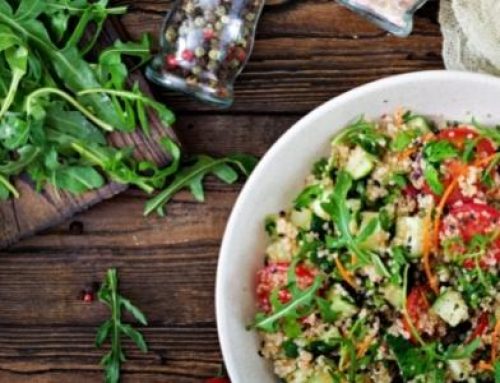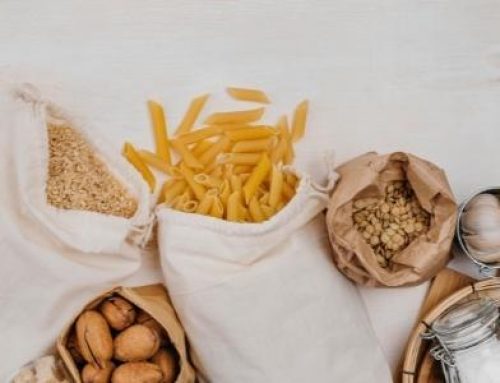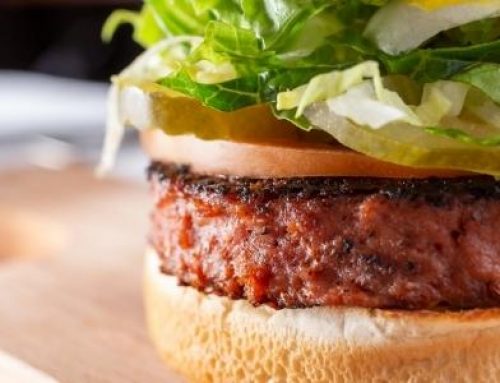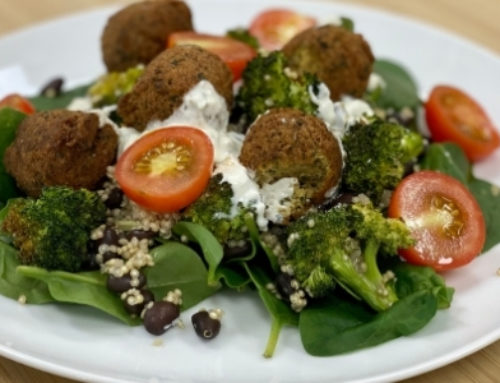
Eating out is a big part of today’s lifestyle. It’s the muffin you buy with your coffee on your way to work, the hot chips you pick up at lunchtime and the takeaway you grab on a Friday evening.
Takeaway is very convenient and something we can’t always avoid, so let’s be realistic, rather than saying you’ll never buy takeaway again we prefer to equip you with the skills that will make the impact of buying food out on your overall health minimal.
A little bit of planning
Planning the meals for the week gives us some direction. So when we’re presented with countless options at once (e.g. in a supermarket), we are not so easily distracted. This way, when we go grocery shopping, we make more consistent, big picture, decisions.
Having to make decisions on many different things in a short space of time has been shown to impair our brain’s ability to make good decisions – it is referred to as decision fatigue, and I’m sure you can relate to experiencing this at one time or another.
These same principles are relevant when we are eating out. When we’re only given a couple of minutes to look through the (sometimes enormous) menu, as well as chat to people you’re with at the table, it can be very difficult to properly comprehend what the menu is telling you about each meal. Most restaurants these days give you the option of looking at the menu online prior to coming in. If you can, take the opportunity to look through the menu items in your own time, without all the distractions at the restaurant and make a choice you’re happy with.
Be wary of drink choices
Something which often gets overlooked when we are dining out is our drink choice. The drinks we choose to accompany our food can make a substantial difference to the overall energy intake of our meal. For instance:
| Common Beverages | Energy Contribution |
| Large Cappuccino (Full Cream Milk) | 200 calories |
| Small Flat White (Skim Milk) | 80 calories |
| Can of Coca-Cola | 140 calories |
| Glass of soda water | 0 calories |
| Restaurant glass of white wine | 120 calories |
| Pint of beer (larger) | 177 calories |
As you can see there can be a sizeable energy variation between some of the common beverages that accompany our meals. Opting for a small skinny flat white rather than a large full cream cappuccino can save as many as 120 calories. Soda water over a sugary soft drink, is a similar energy saving. Being able to compare the two most common alcoholic beverages to other non-alcoholic beverages in this table can be beneficial to see how energy dense they are!
Go for whole food options
The term ‘whole foods’ refers to ingredients in our meals that are more-or-less in their natural state with minimal processing, additions or alterations. Some examples of whole foods compared to their processed counterparts include; baked chicken breast vs. chicken schnitzel, or a baked potato vs. fried potato hash brown. Both examples are sourced from the same base ingredient, but the second version has been processed or had additions that reduce the overall nutritional quality of the final product.
By choosing whole food options, the meal we select is often lower in energy and higher in nutrient. For instance, a piece of grilled fish with fresh salad is much more balanced than battered fish with chips.
Skip the sides
In nearly every eating–out situation, we are presented with the option to add a side to the main part of the meal. What these sides look like vary greatly between different cuisines, as well as the level of formality of our eating out experience. Choosing to forego the sides, will often reduce the energy intake of a particular meal.
| Side Dish | Energy Contribution |
| McDonald’s Large Fries | 408 calories |
| Indian Naan Bread | 280 calories |
| 2x Café Bacon Rashers | 363 calories |
| Garlic Bread (palm sized) | 290 calories |
| Guacamole (0.5 cup) | 212 calories |
By giving the high calorie side dish a miss in favour of a side salad or veggies, it can reduce the overall energy content of a meal – which in some of these dining out situations might already be quite high!
Don’t try to be perfect!
At the end of the day, eating out it is often for a special occasion and seeing loved ones. Ensuring that we enjoy these occasions is absolutely the #1 point of importance. We don’t want food to dictate our life. It’s worth taking in to account how often these types scenarios occur in your life. If you eat out 1-2 times per month then focussing on the nitty-gritty details is far less necessary than if you eat out 2-3 times per week. As with everything in nutrition, consistency is everything! What happens for a couple of meals a month is not a big deal. What happens in the majority of the 100 or so meals in that month is what will matter in long term success!
Quick Tips for Various Cuisines
Mexican:
- Try a bowl-style meal and skip the tortilla wraps.
- Include plenty of legumes (eg. black beans or kidney beans) to increase the veg and fibre content.
- Add in salads – shredded lettuce and salsa made up of tomato, capsicum, red onion.
- Skip the rice in burritos/tacos/enchiladas – the tortillas already have the carb portion covered.
Italian:
- Skip the garlic bread.
- Choose pasta sauces with a tomato base, as opposed to cream or cheese.
- If dining out with others, suggest sharing a pasta meal and ordering a large side salad so that you can put the plate model into practice.
- Try to avoid pizza being the only part of your main meal. Include a side salad increase veg intake.
Indian:
- Tandoori style of cooking (oven roasted/grilled) can be a lighter alternative to rich, creamy curries.
- Be mindful of rice serves. Know what ½ cup of cook rice looks like so that you don’t overdo it
- Skip the rice and enjoy a naan bread with your curry
- Skip the papadums which are high in fat and don’t fill you up.
- Be mindful of potato in curries as you may be overdoing the carbs if you’re eating these with rice and/or naan bread.
- Opt for tomato-based curries instead of coconut cream.
Thai:
- Swap a rich curry for a stir-fry or Thai style salad topped with some grilled meat
- Be mindful of rice serves. Know what ½ cup of cook rice looks like so that you don’t overdo it.
- Order a combination of meat and vegetable dishes.
- Up your vegetables with a side dish of Thai green papaya salad.
- Share a Pad Thai or Pad See Ew and team it with a vegetable stir-fry for a better carbohydrate balance.
Greek:
- Have a delicious Greek style salad to go with your mains. It’s fast and easy.
- Instead of higher calorie dishes such as spanakopita or fried cheeses, try lighter dishes such as Greek Stuffed Capsicum.
- If having a gyro add in all the salad options
- Aim for a plate model. Choose options with lots of salad, a handful of meat and perhaps some dolmades or rice for your carbohydrate.
- Resist the temptation of baklava, or share 1 serve between friends.
Japanese:
- Sushi rolls can be really high in carbohydrates (1 roll = 2 slices bread equivalent) as lots of rice is compacted into little rolls. Skip the rolls and opt for sashimi, or a rice bowl (donburi) style meal.
- Japanese-style main dishes can be low in vegetables and fibre, so don’t forget to make a side of salad or stir-fried vegetables to go with your meal.
- Limit the tempura to reduce fat intake.
Chinese:
- Choose simple stir-fries over deep fried or “sticky” dishes.
- Dishes such as San Choy Bao can be a great way to increase your vegetable intake.
- Be mindful of rice serves. Know what ½ cup of cook rice looks like so that you don’t overdo it.
- Choose lean cuts of meat in dishes. Avoid brisket, peking duck and chicken with skin on
- Opt for steamed dumplings and wontons instead of fried.
- Go for a chicken noodle soup to feel full without a lower calorie intake.
- Many meat dishes lack any significant vegetable content, so grab a side of Chinese broccoli
- Skip the prawn crackers and prawn toast
French:
- If you’re thinking of indulging in delicious French style desserts, keep the main meal light. Great options include salads such as Salad Nicoise, or a vegetable dish like Ratatouille
- Buttery pastries such as croissants should not be an everyday affair. Make like the French and eat these only on the weekends, as they are a real treat.
- Avoid dishes that are heavy on cream.
- In fine dining vegetables are used more as a garnish than a substantial serve, so make sure to order a side salad or vegetables. Green beans are usually a standard menu item.
- Skip the entrée and just order a main or share the entrée.
- French desserts are pretty amazing, but very high in fat and sugar. Share 1 dessert amongst friends so that you all get a taste without all the calories.
Spanish:
- Balance out paella with a Spanish mixed green salad such as Ensalada Mixta.
- Get your vegetable hit by starting the meal with gazpacho.
- For tapas, think about making up a Plate Model with the selections made. Vegetable options include salsa, pimentos (peppers) and setas al Ajillo (mushroom dish). Patatas bravas is a potato dish for carbs, and then chorizo, meat empanadillas or pincho moruno (meat kebab sticks) for protein.
German:
- Before digging in to the sauerkraut, check how the particular restaurant prepares theirs – sometimes it is served after cooking with bacon fat.
- Keep the potato salad to the carb portion of your plate and limit intake to the equivalent of 1 medium potato
- It wouldn’t be German dining without sausages but try to keep them to plate model portions.
- Try some of the lesser known German salads to make up the veg component like a Bavarian Radish salad or Celery root salad
If you’d like further help with your nutrition please click below:





